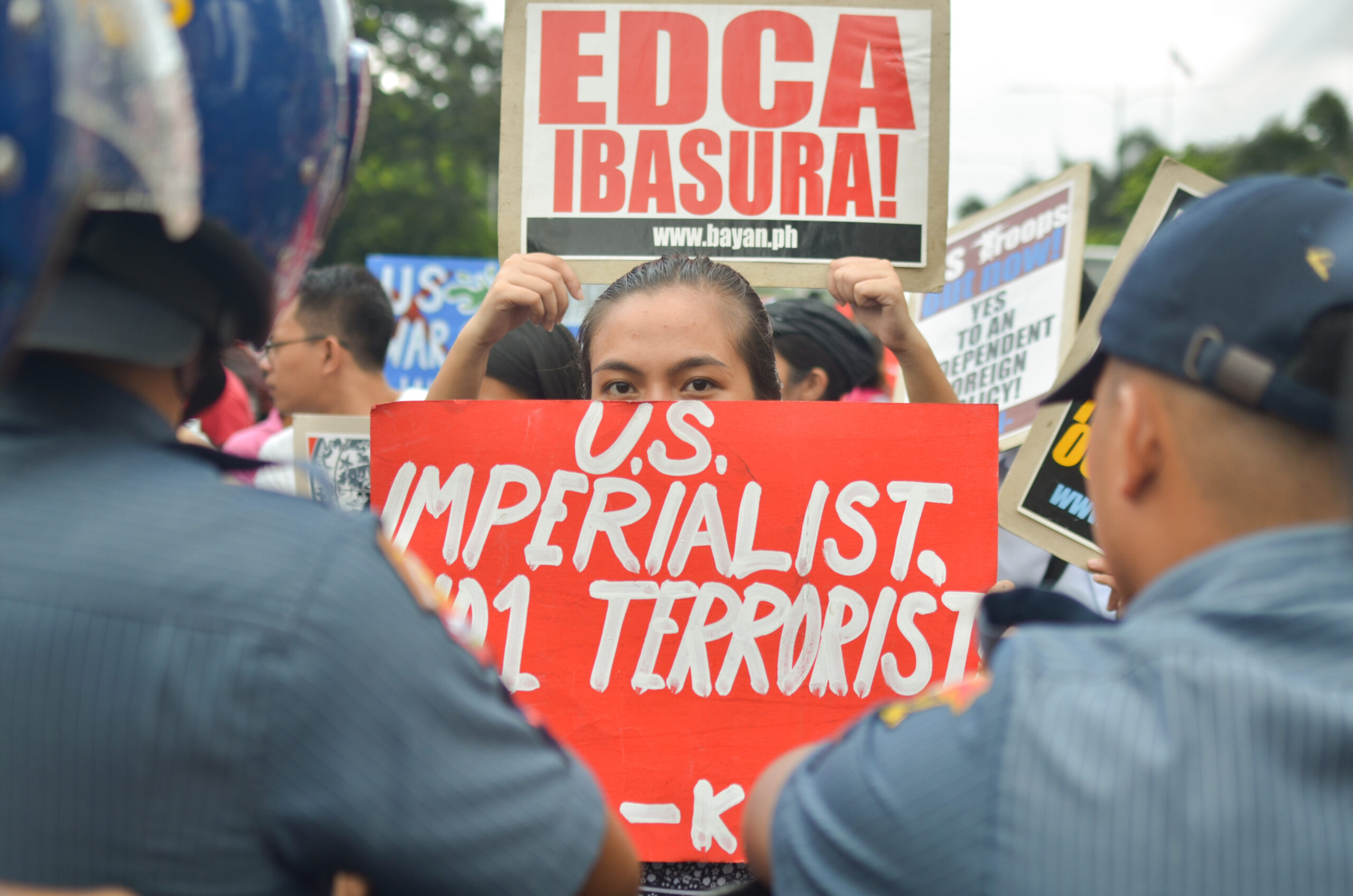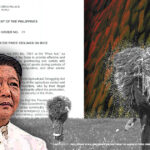![]() Last Wednesday the United States committed to allocate, by the end of fiscal year 2023, “more than $100 million in infrastructure investments at the new and existing EDCA sites” – in addition to $82 million earlier allotted for the first five sites.
Last Wednesday the United States committed to allocate, by the end of fiscal year 2023, “more than $100 million in infrastructure investments at the new and existing EDCA sites” – in addition to $82 million earlier allotted for the first five sites.
US Defense Secretary Lloyd Austin said those investments “will spur job creation and economic growth in local Philippine communities.” His enthusiasm may have exhilarated the current administration, especially the defense establishment.
But to us, the Filipino people, one crucial issue remains unclear, even disturbing: how exactly or to what extent the American forces will use the EDCA sites.
A two-day bilateral “2+2 Ministerial Dialogue” was held recently in Washington, between the defense secretaries and foreign affairs chiefs of the two countries. A Reuters report has pointed out the following:
• The Pentagon has not specifically said what the additional four EDCA sites would be used for, except that construction work would include “airport expansion” and military training would entail “naval assets” of both parties.
• The US views the Philippines as a potential location for “rockets, missiles and artillery systems to counter a [probable?] Chinese amphibious invasion of Taiwan,” according to unnamed “experts.”
Austin was quoted as saying it was “too early” to discuss what assets the US would like to station at Philippine military bases chosen as “agreed locations” for American facilities.
The STAR on Thursday reported that Austin had stressed – saying what presumably Filipinos need to hear – that the activities and number of troops to be rotationally deployed in the EDCA sites are “a joint decision” of the two governments.
Foreign Affairs Secretary Enrique Manalo, however, pointed out that much more work needed to be done in operationalizing the EDCA sites. The STAR quoted him, thus:
“We have to identify the terms of reference, how these activities will be undertaken. So I don’t think we’re really at any stage yet to answer how (the EDCA sites) might be used. They’re still open to discussion.”
Less careful was the AFP spokesperson Col. Medel Aguilar. When asked how the new EDCA sites would be used should tensions erupt between the US and China over Taiwan, he presumptuously, and dangerously, replied: The sites “will also be made available during the emergency situation for combined use of the US and AFP.”
Earlier, Manalo disclosed that the two sides had reached an understanding on the basic elements and purposes of the EDCA sites, such as being “in a position to improve the interoperability [of US and Philippine armed forces] and perhaps respond to other types of security challenges.”
They had also agreed to complete a Security Sector Assistance Program Roadmap that would guide shared defense modernization investments and delivery – over the next five to 10 years – of “priority defense platforms and institutional capacity-building to enhance the Philippines’ multi-domain deterrence.” Included in these priority defense platforms would be radars, unmanned aerial systems (drones), military transport aircraft and coastal and air defense systems.
Meantime, the US was committed to “swiftly finalizing” the proposed Philippines-US Bilateral Defense Guidelines, assured Austin. The guidelines would chart their cooperation across “all operational domains, including space and cyberspace.”
Expressing confidence in the strength of Philippine-US relationship/partnership, Secretary Manalo saw no harm in America’s handling of intelligence with its allies, referring to the recent leak of US classified documents, including espionage on its key allies, South Korea (recorded top-secret talks among key government officials) and Israel. In light of this latest intelligence leak disclosure and the previous ones, presuming US spying on its strategic defense partners in Asia-Pacific, including the Philippines, is a no-brainer.
EDCA was signed in 2014 as an executive agreement (not treaty) in pursuance of the 1998 Visiting Forces Agreement and the 1951 Mutual Defense Treaty. Some relevant provisions are as follows:
• Purpose and scope: The EDCA authorizes American forces access to “Agreed Locations” (ALs) on a “rotational basis, as mutually determined” and to “undertake the following types of activities [within Philippine territory] in relation to their access and use of (ALs): security cooperation exercises, joint and combined training activities, humanitarian assistance and disaster relief activities and such other activities, as may be agreed upon by the Parties.”
• On ALs: US forces and contractors, vehicles, vessels and aircraft operated by or for US forces may conduct the following activities: “training, transit, support and related activities; refueling of aircraft; bunkering of vessels; temporary maintenance of vehicles, vessels and aircrafts; temporary accommodation of personnel; communications; prepositioning of equipment, supplies and materiel [weapons, ammunitions, accessories]; deploying forces and materiel and such other activities the Parties may agree on.”
• When requested, the Philippines “shall assist in facilitating transit and temporary access by US forces to public land and facilities (including roads, ports and airfields), including those owned or controlled by local governments, and to other land and facilities.”
• The Philippines “grants to the US… operational control of (ALs) for construction activities and authority to undertake such activities on, and make alterations and improvement.” US forces “shall consult on issues regarding such matters to ensure that their implementation should be consistent with the requirements and standards of both Parties.”
• On equipment, supplies and materiel: The Philippines authorizes US forces… to preposition and store defense equipment, supplies and materiel at the ALs… “US forces shall notify the AFP in advance regarding the quantities and delivery schedules of defense equipment, supplies and materiel that (they) intend to preposition… (and) who will make such deliveries.”
• The prepositioned materiel “shall be for the exclusive use of US forces, and full title to (them)… US forces shall have control over the access and disposition of such prepositioned materiel and shall have the unencumbered right to remove (these) at any time from the territory of the Philippines.”
• The prepositioned materiel shall not include nuclear weapons.
• Resolving disputes arising from the EDCA shall “exclusively” be “through consultation between the Parties.” Note that this is akin to how China wants to resolve maritime disputes in the South China Sea.
Published in Philippine Star
April 15, 2023



